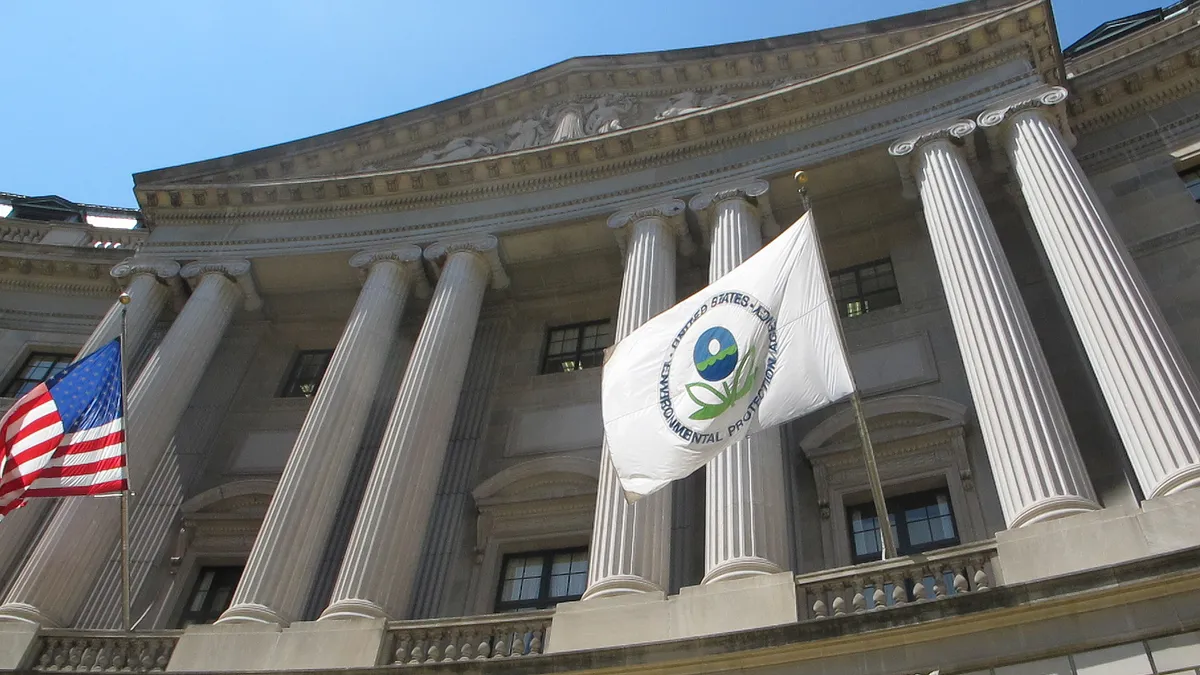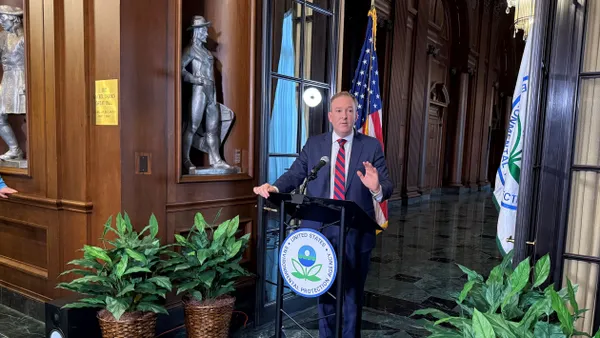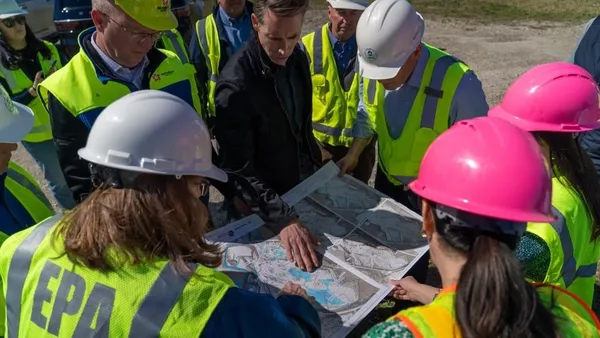Dive Brief:
- In an emailed statement, a spokesperson with the Environmental Protection Agency (EPA) told Waste Dive any states that fail to submit plans for Emission Guidelines under Clean Air Act section 111(d) "are not subject to sanctions," and should not be concerned regarding any sanction. "Since the Agency is reconsidering various issues regarding the landfill regulations, at this time we do not plan to prioritize the review of these state plans," the spokesperson wrote, "nor are we working to issue a Federal Plan for states that failed to submit a state plan."
- In the same statement, the EPA spokesperson said the agency intends to align reconsideration of the New Source Performance Standards (NSPS) with the risk and technology review (RTR) for the same source category. "EPA has a court order to complete the RTR by March 13, 2020 and the reconsideration would be finished on the same timeline," the spokesperson wrote. The EPA is also considering whether additional steps could be appropriate during the reconsideration period, but did not offer specifics.
- Amy Bannister, Waste Management's senior director for air programs, said one compliance challenge with the current 2016 air quality rules now in effect is that they don't spell out a clear process for moving forward from the old rules. This leaves some sites in a position where multiple sets of rules apply. "There's existing rules, there's the old rules, and there's a new rule," Bannister told Waste Dive. "There's no connection between the old rules and the new rules. So you have to comply with all the rules that apply."
Dive Insight:
This information appears to be the most straightforward public guidance provided by the EPA about landfill emissions standards since the 90-day stay on the 2016 rules expired on Aug. 29. The industry — represented by Waste Management, Republic Services, the National Waste & Recycling Association and the Solid Waste Association of North America — has been working to gain more clarity on compliance since the NSPS and EG rules were finalized last year. Those efforts continued into 2017 and were acknowledged by the Trump administration with a 90-day administrative stay in May.
The rules that promulgated in 2016 do not include language to transition compliance from old guidelines to new guidelines. Additionally, some of the new rules reference old National Emission Standards for Hazardous Air Pollutants (NESHAP) rules, creating further confusion.
Pat Sullivan, senior vice president of SCS Engineers, said in an interview with Waste Dive that the industry's complaints weren't because the new rules were too stringent, but because they were not written or structured well. "We're not asking for these rules to be completely taken away, or be completely neutered. We're really just looking for clean up," Sullivan said. "I don't know a better way to describe it. It's just a messy regulation that [EPA] didn't really think through."
The EPA's spokesperson told Waste Dive that the agency would "continue to work with states and stakeholders as we develop a path forward on these separate but related actions." Additionally, they said that any company with specific questions regarding its compliance with NSPS should contact "the appropriate EPA regional office."













